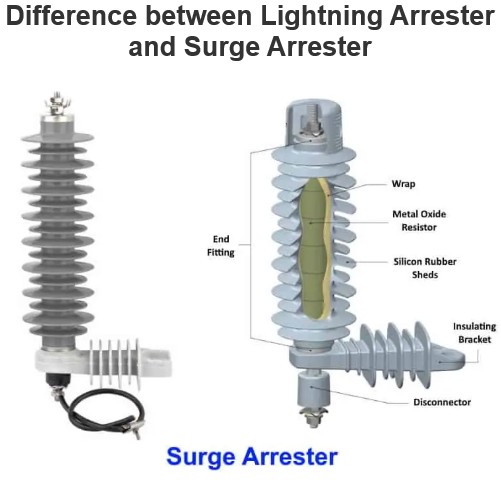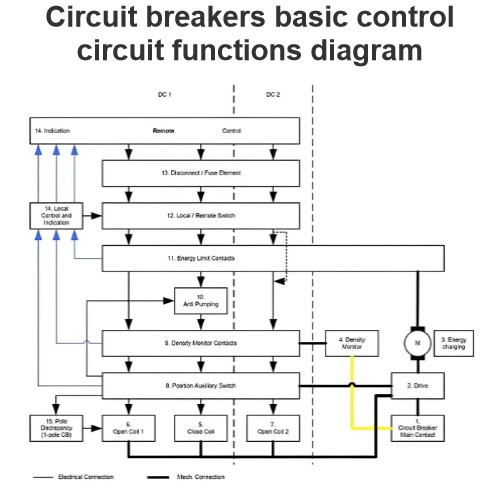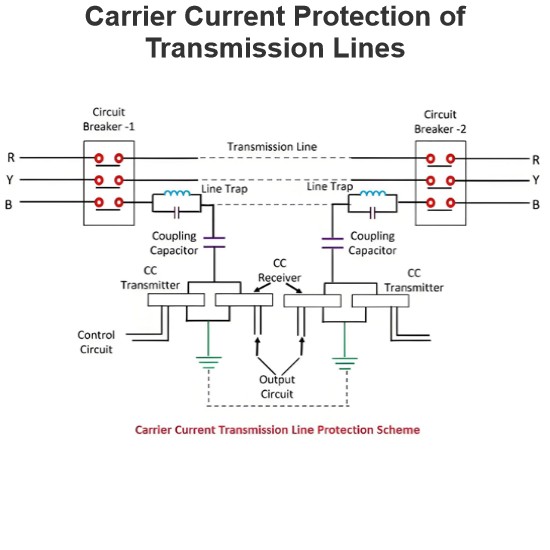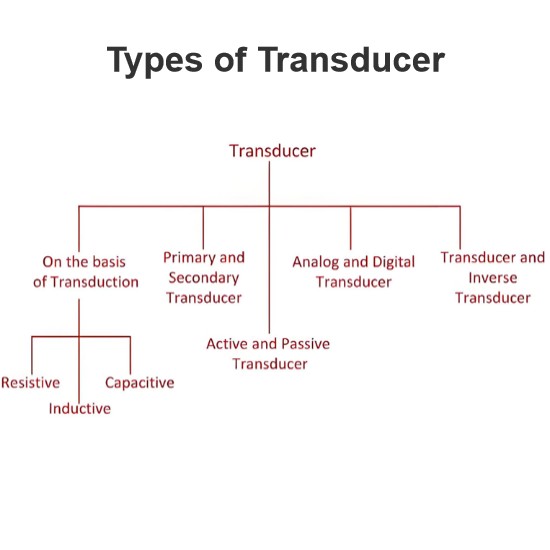Busbars and Connectors in HV and EHV installations
Busbars and Connectors in Indoor and Outdoor Installations
What is an Electric Busbar?
An electric busbar is defined as a single conductor or a group of conductors that serve the purpose of collecting electrical power from incoming feeders and distributing it to outgoing feeders. In essence, it acts as a crucial junction where the currents from incoming and outgoing feeders converge, effectively aggregating electrical power at a single point within an electrical system. This function makes busbars essential components for facilitating the efficient flow and distribution of electricity in various power - related setups.
Busbars for Outdoor Installations
In high - voltage (HV), extra - high - voltage (EHV) installations, as well as in outdoor medium - voltage (MV) installations, bare busbars and connectors are commonly utilized. The conductors employed in these scenarios can be of two main types: tubular or stranded wires.
Tubular busbars are typically supported by column insulators, which are usually made of ceramics. These insulators play a vital role in maintaining electrical isolation between the busbars and the supporting structure, ensuring the safe and proper functioning of the electrical system. On the other hand, stranded - wire busbars are secured in place using dead - end clamps, which firmly hold the wires and prevent any movement or loosening that could disrupt the electrical connection.
Figures 1 and 2 provide visual examples that illustrate the concepts described above, showcasing the typical appearance and installation of outdoor busbars and their associated components.
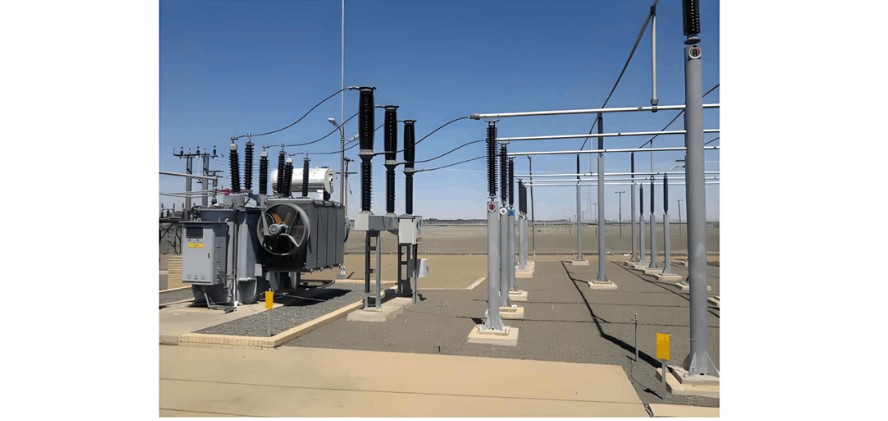
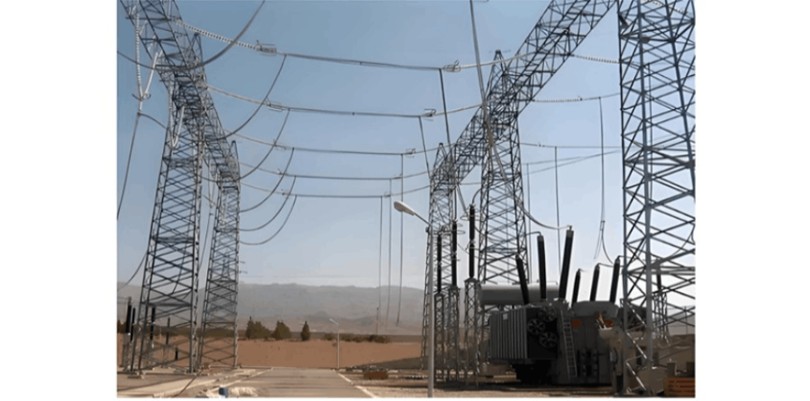
Busbars for Switchgear Installations
Busbars used in switchgear installations are commonly fabricated from copper, aluminium, or aluminium alloys such as Al - Mg - Si (aluminium - magnesium - silicon) alloys. These materials are selected for their electrical conductivity, mechanical properties, and cost - effectiveness, making them suitable for efficiently distributing electrical power within switchgear systems.
Main Characteristics of Bare Busbars
Physical Dimensions: For tubular conductors, the diameter is a critical parameter, while for stranded - wire conductors, the cross - sectional area is of primary importance. These dimensions directly influence the busbar's current - carrying capacity and electrical resistance. A larger diameter or cross - section allows for the transmission of higher currents with lower losses.
Mechanical Properties: Bare busbars must possess adequate mechanical strength to withstand various forces encountered during operation. Key mechanical parameters include tensile strength (the ability to resist stretching), compressive strength (resistance to squeezing), bending strength (ability to withstand bending forces), and buckling strength (resistance to deformation under compressive loads). Additionally, moments of resistance and inertia are crucial for understanding how the busbar will respond to mechanical stresses, ensuring its structural integrity over time.
Rated Current: The rated current of a busbar indicates the maximum continuous current it can safely carry without excessive heating or degradation of its performance. This value is determined based on factors such as the material properties, cross - sectional area, and ambient operating conditions. Selecting a busbar with an appropriate rated current is essential to prevent overheating and potential failures in the electrical system.
It's important to note that since bare busbars are not insulated, the concept of rated voltage does not apply in the same way as it does for insulated conductors. When connecting busbars to equipment terminals, specialized connectors must be used. These connectors, as exemplified in Figure 3, ensure a secure, low - resistance electrical connection, facilitating the reliable transfer of electrical power between the busbars and other components of the switchgear system.
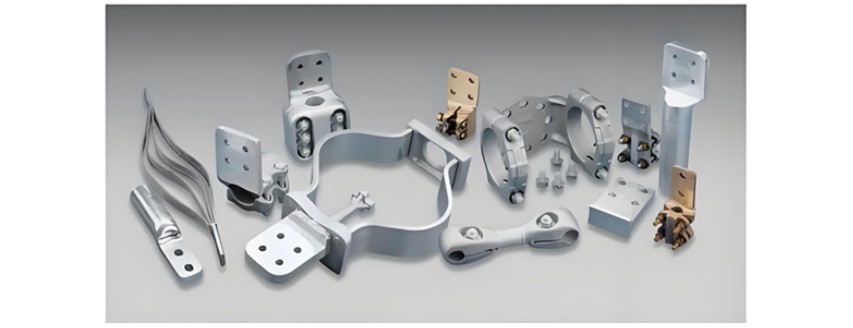
Busbar Connection and Insulated Busbar Systems
Busbar Connection
When it comes to making connections between busbars, the choice of connectors is crucial and depends on the materials of the busbars being joined. For copper - to - copper connections, bronze connectors are typically employed. These connectors offer excellent electrical conductivity and mechanical strength, ensuring a reliable connection. For aluminium - to - aluminium connections, aluminium alloy connectors are the ideal choice. They are specifically designed to match the properties of aluminium busbars, providing a secure and stable connection while minimizing the risk of corrosion.
In the case of copper - to - aluminium connections, bi - metallic connectors are essential. Using these connectors is necessary to prevent corrosion that can occur due to the electrolytic effect when two different metals come into contact in the presence of an electrolyte (such as moisture in the air). The electrolytic reaction between copper and aluminium can lead to the degradation of the connection over time, potentially causing electrical failures. Bi - metallic connectors are engineered to mitigate this issue, ensuring a long - lasting and reliable connection between copper and aluminium busbars.
Insulated Busbars & Trunking Systems
In indoor medium - voltage (MV) and low - voltage (LV) installations, where high currents are involved and space is at a premium, insulated busbars and trunking systems are often utilized. In these setups, busbars are enclosed within metallic enclosures, which serve dual purposes of providing mechanical protection and electrical insulation. The enclosures safeguard the busbars from physical damage, such as accidental impacts or contact with foreign objects, and also prevent electrical shocks by isolating the live conductors from the surrounding environment.
However, this enclosure comes with a trade - off. The presence of the enclosure reduces the heat dissipation of the busbars. It restricts the flow of cooling air around the busbars and decreases the radiation losses, which are important for dissipating the heat generated during current flow. As a result, the current ratings of busbars within enclosures are often significantly lower compared to those of busbars exposed to free air.
To address this issue and minimize the reduction in current - carrying capacity, ventilated enclosures can be used. These enclosures are designed with openings or vents that allow for better air circulation, facilitating more efficient heat dissipation. This helps to maintain higher current ratings while still providing the necessary mechanical protection and insulation.
Figure 4 provides an illustrative example of an enclosed busbar, showcasing the typical structure and appearance of such a system and highlighting how the enclosure is integrated with the busbars to meet the requirements of indoor electrical installations.
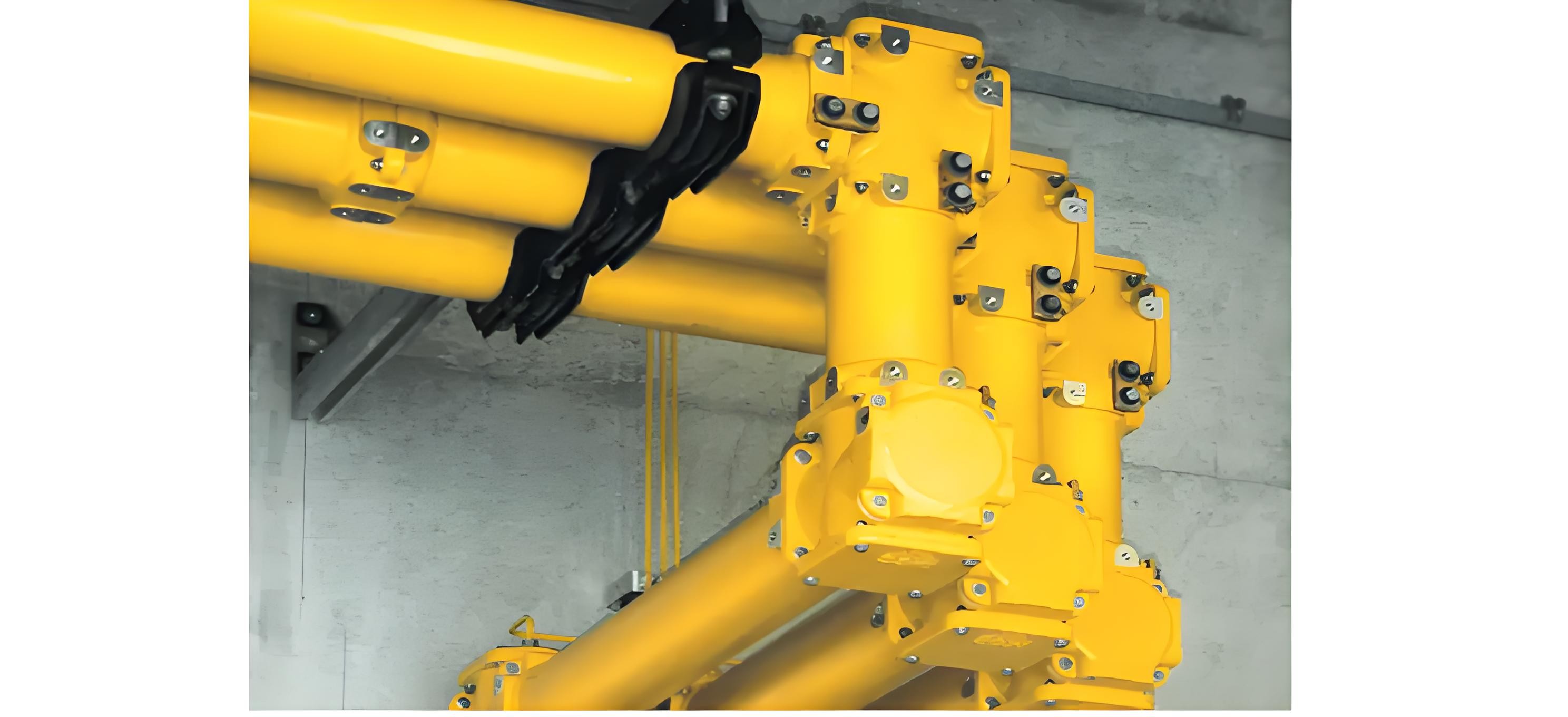
Isolated Busbars and Trunking Systems
Isolated Busbars
Isolated busbars are typically constructed using flat bars of copper or aluminium. The number of bars per phase can vary, depending on the magnitude of the current they are required to carry. In this setup, each individual phase or pole is encased within a separately earthed sheath. The ends of this sheath are connected by a bar rated for full short - circuit current.
The primary function of the sheath is to prevent the occurrence of inter - phase short - circuit currents. Additionally, it offers an important advantage related to magnetic fields. When current flows through the conductors, it generates strong magnetic fields. However, an equal and opposite current is induced in the enclosure or sheath, which almost completely cancels out these magnetic fields. This cancellation of magnetic fields helps to reduce electromagnetic interference and minimize the potential for unwanted effects on nearby electrical and electronic equipment.
Commonly employed insulating materials for isolated busbars include air and sulfur hexafluoride (SF6). Air is a readily available and cost - effective option, while SF6 offers superior insulating properties, making it suitable for applications where higher levels of insulation and electrical performance are required.
Trunking Systems
In low - voltage (LV) installations, one cost - effective approach to power distribution, as well as supplying power to multiple pieces of equipment and facilitating interconnections between switchboards or between a switchboard and a transformer, is the use of a trunking system. As illustrated in Figure 5, trunking systems provide a structured and efficient way to route electrical conductors, protecting them from physical damage and simplifying the installation and maintenance of electrical systems.
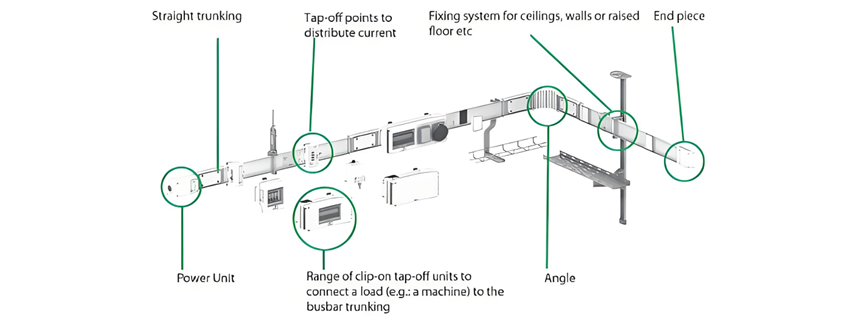
Trunking Systems: Features and Advantages
A trunking system consists of pre - assembled flat bar conductors (including phase and neutral conductors) enclosed within a single metallic casing. This design offers a streamlined and organized approach to electrical power distribution.
In feeder trunking systems, power extraction from the busbar trunking is achieved through the use of tap - off units. These units are connected at specific, predefined locations along the busbar trunking. They enable the safe and controlled removal of power from the system, typically via appropriate protective devices such as circuit breakers or fuses. This setup ensures that electrical power can be distributed precisely to various loads as required.
Trunking systems present several significant advantages over traditional cable - based systems:
Cost - effectiveness and Ease of Installation: Trunking systems are more economical to implement and simpler to install, especially when dealing with high - current applications. In such scenarios, achieving the necessary current ratings with single - core cables often requires using multiple cables to meet voltage drop and voltage dip specifications. This not only increases the complexity and cost of cable installation but also raises the risk of overheating between cables, which can potentially lead to short circuits. In contrast, trunking systems provide a more efficient and reliable solution for high - current power distribution.
Mechanical Strength and Installation Efficiency: They exhibit superior mechanical strength over long distances with minimal need for fixings. This characteristic significantly reduces installation times, as fewer supports and fasteners are required compared to cable runs. The robustness of trunking systems also ensures greater durability and reliability during operation.
Space - saving and Simplified Design: Trunking systems eliminate the need for multiple cable runs along with their associated supporting metalwork, simplifying the overall electrical infrastructure. This reduction in complexity not only saves space but also makes the system easier to manage and maintain.
Reduced Termination Requirements: They demand less termination space within switchboards. This is a crucial advantage, especially in switchboard designs where space is at a premium, allowing for more compact and efficient electrical panel layouts.
Eliminating the Need for Cable Jointers: Since trunking systems are pre - assembled and do not require on - site cable splicing, the need for specialized cable jointers is eliminated. This not only reduces labor costs but also minimizes the potential for errors associated with cable joining, enhancing the overall quality and reliability of the electrical installation.
Flexibility in Power Distribution: Multiple tap - off outlets provide flexibility to adapt to changes in power requirements after the initial installation, subject to the rating of the busbar trunking. This feature allows for easy reconfiguration of the electrical system to accommodate new loads or changes in load demands, making trunking systems highly adaptable to evolving electrical needs.
Ease of Repositioning and Extension: Repositioning distribution outlets is a straightforward process with trunking systems. Moreover, the system can be easily extended as the electrical requirements of a facility grow, offering a scalable solution for power distribution.
Aesthetic Appeal: In areas where the electrical system is visible, trunking systems offer an aesthetically pleasing appearance compared to bundles of cables. Their sleek and uniform design can enhance the visual appeal of a building's interior, making them a preferred choice in commercial and public spaces.
Reusability: Busbar trunking systems can be dismantled and reused in other areas, providing a cost - effective solution for facilities undergoing renovation or expansion. This reusability factor not only reduces waste but also offers significant savings in terms of material and installation costs.
Enhanced Fire Resistance: They provide better resistance to the spread of fire compared to traditional cable systems. The metallic enclosure of the trunking helps to contain fire and prevent it from spreading through the electrical system, contributing to improved fire safety in buildings.
The Electricity Encyclopedia is dedicated to accelerating the dissemination and application of electricity knowledge and adding impetus to the development and innovation of the electricity industry.

